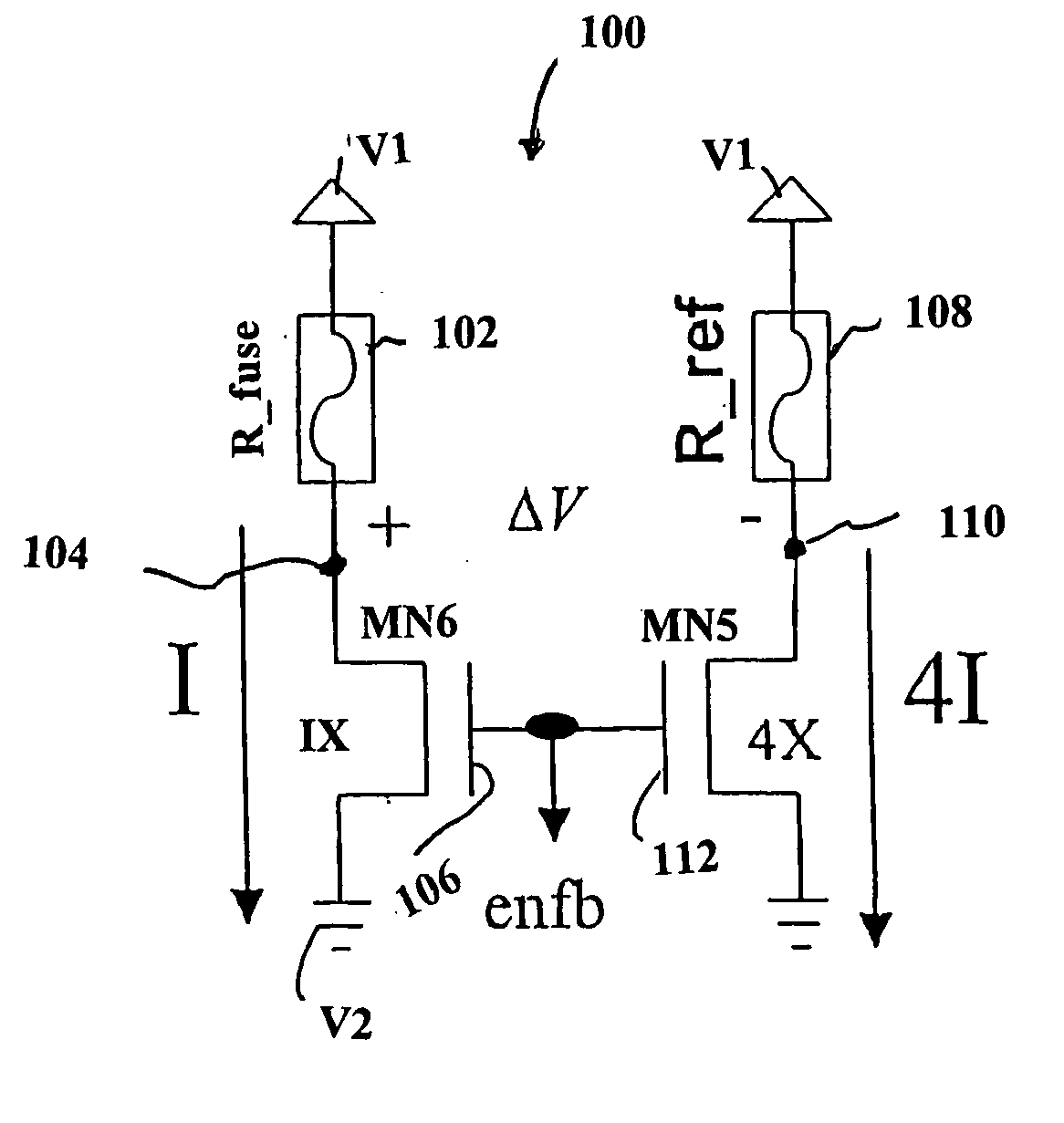Detecting the status of an electrical fuse
a technology for detecting the status of electrical fuse, applied in the direction of fuses testing, fault location, instruments, etc., can solve the problem of inability to adjust the sensitivity of the fuse circuit to detect the resistance value of the fuse, the timing of the latch trip lacks control, and the control signals mrsb>1/b> and mrsb>2/b> opera
- Summary
- Abstract
- Description
- Claims
- Application Information
AI Technical Summary
Benefits of technology
Problems solved by technology
Method used
Image
Examples
Embodiment Construction
[0010] Terms concerning attachments, coupling and the like, such as “connected” and “interconnected,” refer to a relationship wherein structures are secured or attached to one another either directly or indirectly through intervening structures, as well as both movable or rigid attachments or relationships, unless expressly described otherwise.
[0011]FIG. 1 discloses a fuse bridge circuit (100) having a fuse resistance R—fuse, of a poly fuse (102) under detection, connected between a first reference voltage V1 and a first node (104). An MN6 transistor (106), for example, an NMOS transistor, has its drain connected to the first node (104), and its source connected to a second reference voltage V2, for example, ground, also referred to as, earth.
[0012]FIG. 1 further discloses fuse resistance R—ref, of a reference poly fuse (108) connected between the first reference voltage V1 and a second node (110). An MN5 transistor (112), for example, an NMOS transistor, has its drain connected t...
PUM
 Login to View More
Login to View More Abstract
Description
Claims
Application Information
 Login to View More
Login to View More - R&D
- Intellectual Property
- Life Sciences
- Materials
- Tech Scout
- Unparalleled Data Quality
- Higher Quality Content
- 60% Fewer Hallucinations
Browse by: Latest US Patents, China's latest patents, Technical Efficacy Thesaurus, Application Domain, Technology Topic, Popular Technical Reports.
© 2025 PatSnap. All rights reserved.Legal|Privacy policy|Modern Slavery Act Transparency Statement|Sitemap|About US| Contact US: help@patsnap.com



